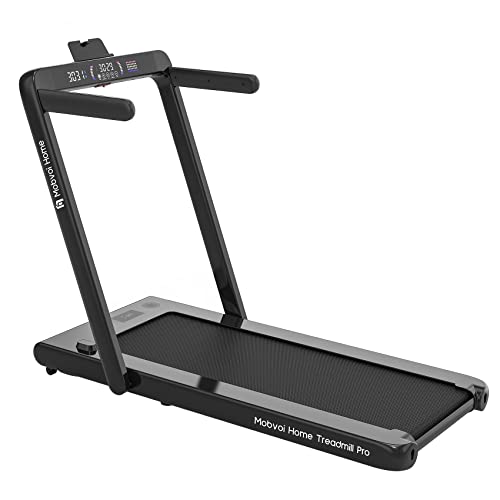The Reason Behind Walking Machine Has Become The Obsession Of Everyone In 2024
The Walking Machine: A Comprehensive Guide to Your Fitness Companion
In today's fast-paced world, where time is a high-end, maintaining a consistent workout routine can be a challenge. For numerous, a walking machine— commonly understood as a treadmill— serves as an ideal fitness companion. This short article provides an extensive appearance at walking machines, including their benefits, types, upkeep suggestions, and often asked concerns.
Why Choose a Walking Machine?
Walking machines use a useful and reliable way to include cardiovascular exercise into life. Here are several essential benefits:
- Convenience: Walking machines permit individuals to exercise anytime, regardless of weather conditions or time constraints. They are perfect for hectic schedules.
- Flexibility: Users can stroll, jog, or run at their own speed and strength.
- Security: Walking machines present a lower danger of injury compared to outdoor walking or running, specifically for newbies or those recovering from injuries.
- Tracking Progress: Many treadmills included integrated displays that track metrics like speed, distance, and calories burned.
Types of Walking Machines
When thinking about a walking machine, it's important to select the ideal type based upon individual physical fitness goals and area restrictions. Below are the primary types of walking machines:
Type
Description
Handbook Treadmills
These machines do not have a motor, and users require to walk or go to rotate the belt.
Electric Treadmills
Powered by an electric motor, allowing users to set the speed and slope easily.
Folding Treadmills
Developed for easy storage, these treadmills can be folded up when not in usage.
Desk Treadmills
Perfect for a dual work and workout environment, these compact machines enable walking while working.
Incline Trainers
These enable users to mimic uphill walking, improving workout strength and calorie burn.
Selecting the Right Walking Machine
Choosing the right walking machine can significantly affect motivation and efficiency. Here are some factors to consider:
Key Features to Look For
- Motor Power: A powerful motor guarantees a smooth and consistent workout. For periodic walkers, a 1.5 HP motor is normally adequate; for much heavier usage, try to find 3.0 HP and above.
- Belt Size: A larger and longer belt supplies more space for a comfortable stride. Requirement sizes vary from 16 inches wide and 50 inches long.
- Incline Options: Adjustable incline settings can simulate walking or running uphill, increasing the intensity of the exercise.
- Shock Absorption: Good shock absorption decreases the risk of joint injuries and improves convenience.
- Console Features: Look for integrated exercises, heart rate screens, and connectivity features like Bluetooth for a more appealing experience.
Budget plan Considerations
Walking machines come in a wide variety of prices, depending on features and construction quality. Here's a rough budget breakdown:
Price Range
Functions
Under ₤ 300
Basic manual or little electric treadmills with limited features.
₤ 300 – ₤ 700
More sophisticated electric treadmills with incline, medium power motors, and much better service warranties.
₤ 700 – ₤ 1500
High-quality electric treadmills with bigger integrated display screens, extensive functions, and service warranties.
₤ 1500 and above
High-end designs using advanced technology, functions, and resilient building and construction for severe physical fitness lovers.
Upkeep Tips for Your Walking Machine
To guarantee longevity and ideal performance of a walking machine, think about the following upkeep tips:
- Regular Cleaning: Dust and sweat can collect on the machine and the belt. Clean down the surface areas and tidy the belt routinely.
- Lubrication: Depending on the design, lubricating the running belt regularly can prevent wear and tear. Inspect the producer guidelines for suggested lubrication schedules.
- Examination: Periodically inspect the machine for loose screws or used parts. Tighten and replace as required.
- Calibration: Occasionally, examine the calibration of your machine's metrics to ensure they supply precise information.
- Proper Use: Follow the maker's suggestions for weight limits and functional guidelines.
FAQs About Walking Machines
1. Are walking machines a good workout?
Yes, walking machines provide an outstanding cardiovascular exercise, can assist with weight-loss, and improve overall health.
2. How typically should I utilize a walking machine?
Go for at least 150 minutes of moderate-intensity aerobic activity each week, which can quickly be achieved with routine sessions on a walking machine.
3. Can I slim down on a walking machine?
Yes, incorporating a walking machine routine into a healthy diet can promote weight loss, particularly if integrated with intervals and incline training.
4. Is it safe for elders to utilize a walking machine?
Yes, walking machines can be safe for seniors with low-impact settings and security features like handrails. Nevertheless, individuals need to speak with their doctor before starting any exercise program.
5. What's the distinction in between a treadmill and a walking machine?
The term “walking machine” usually describes a treadmill planned for walking, while “treadmill” can describe machines used for numerous strengths, including running.
With their versatility and benefit, walking machines can substantially improve one's fitness journey. By carefully choosing the best type, ensuring correct maintenance, and including different exercise strategies, users can maximize their walking machine's benefits. As with linked here , consistency is crucial to attaining enduring fitness results.
